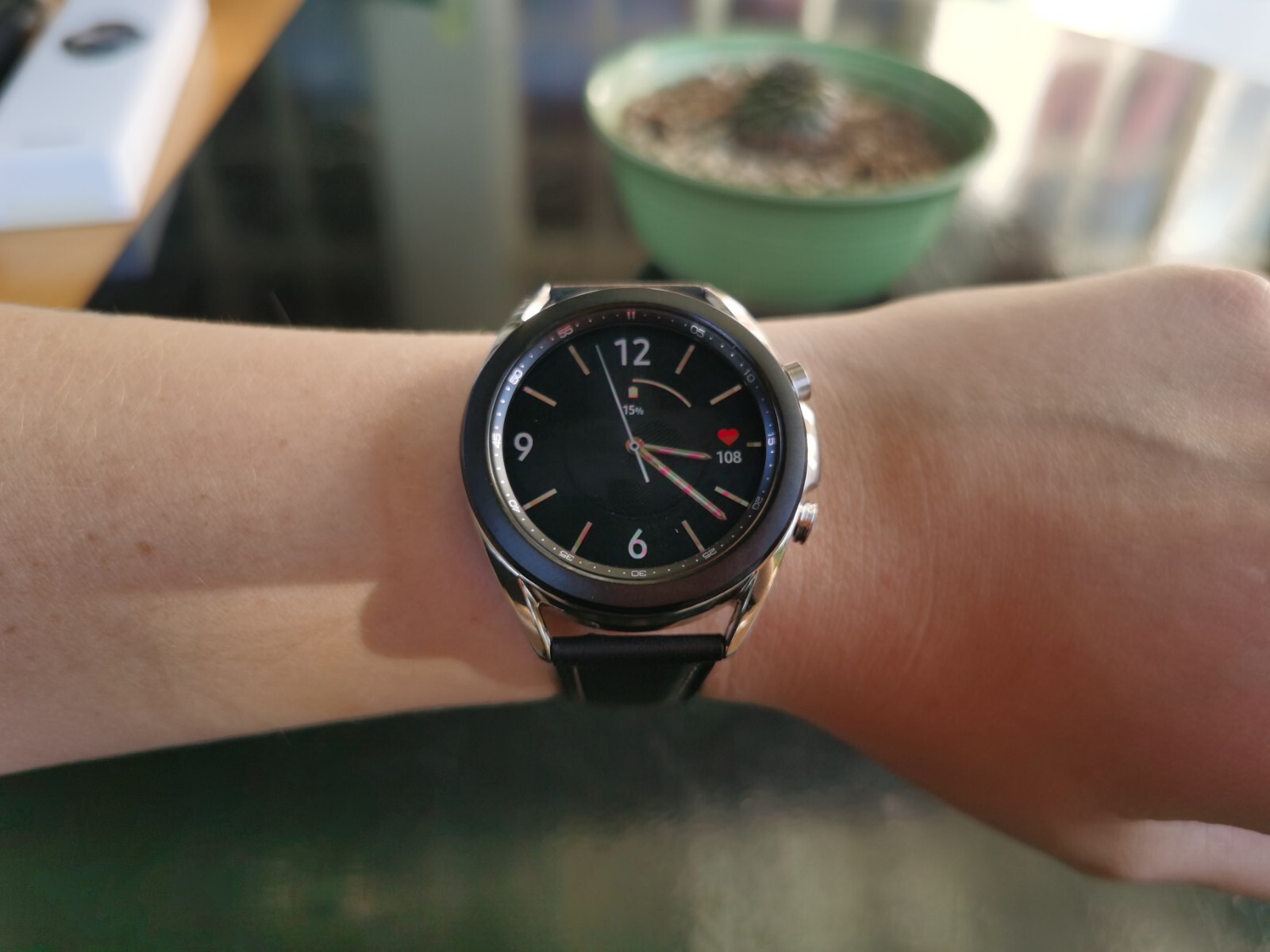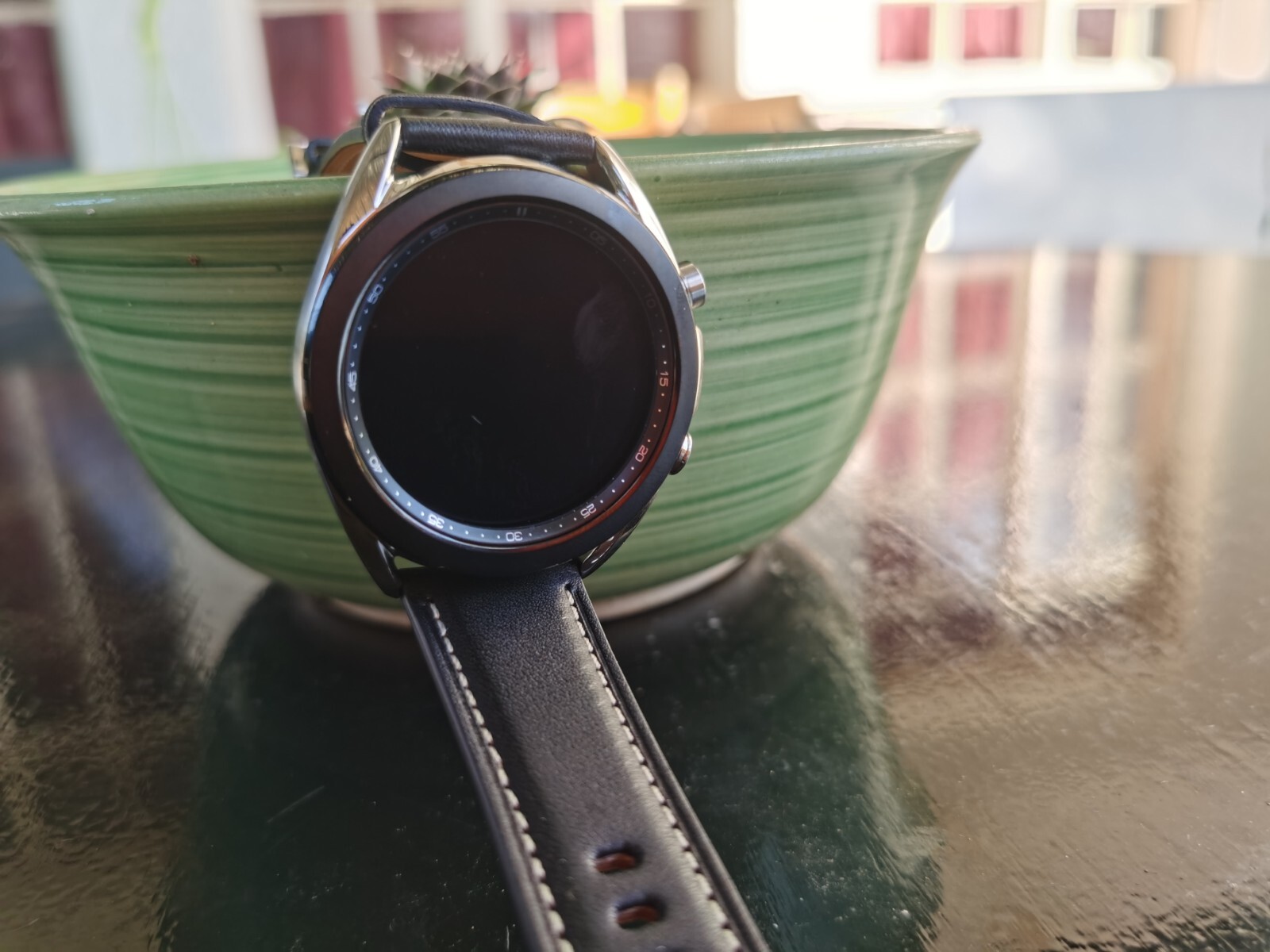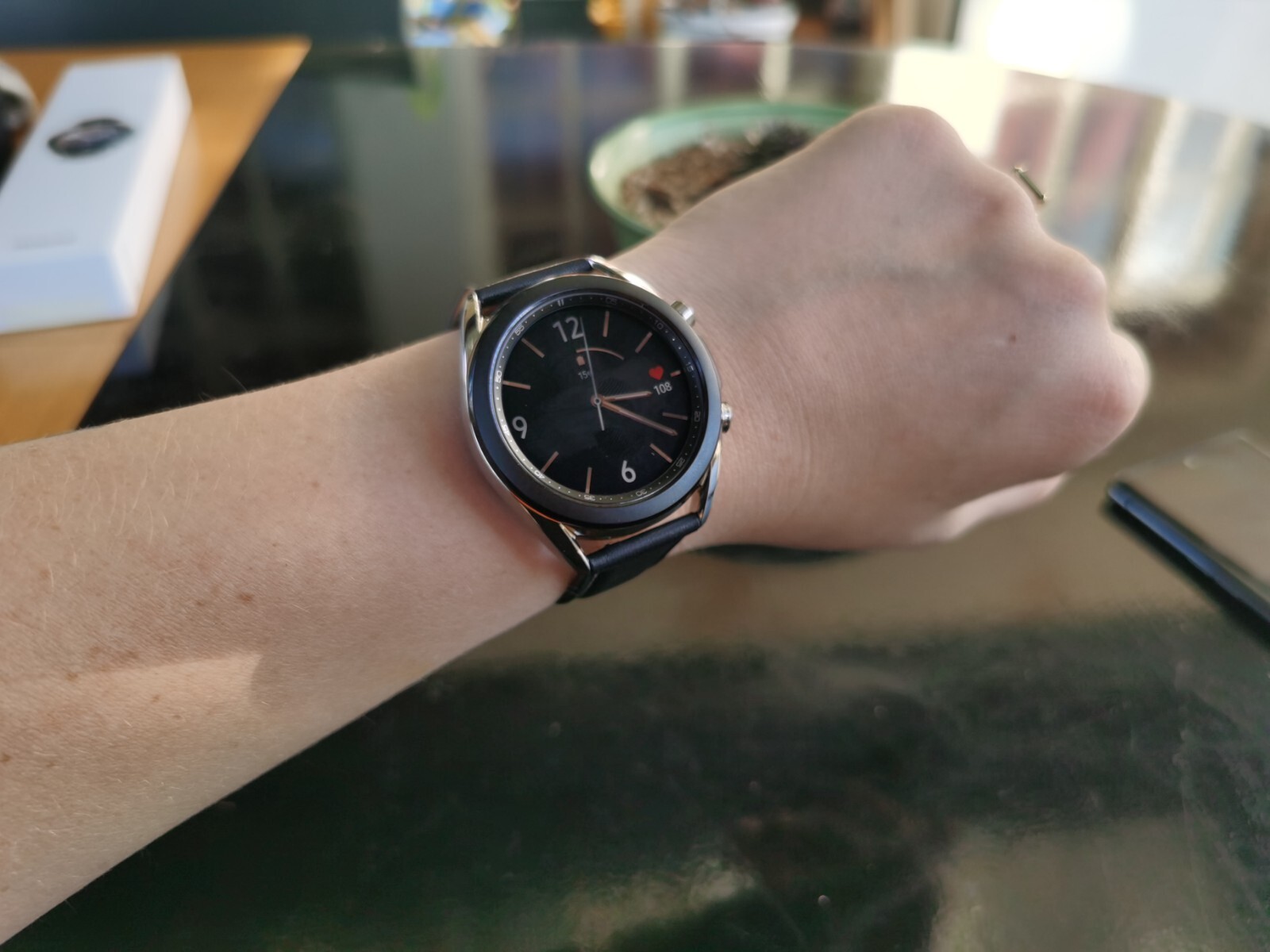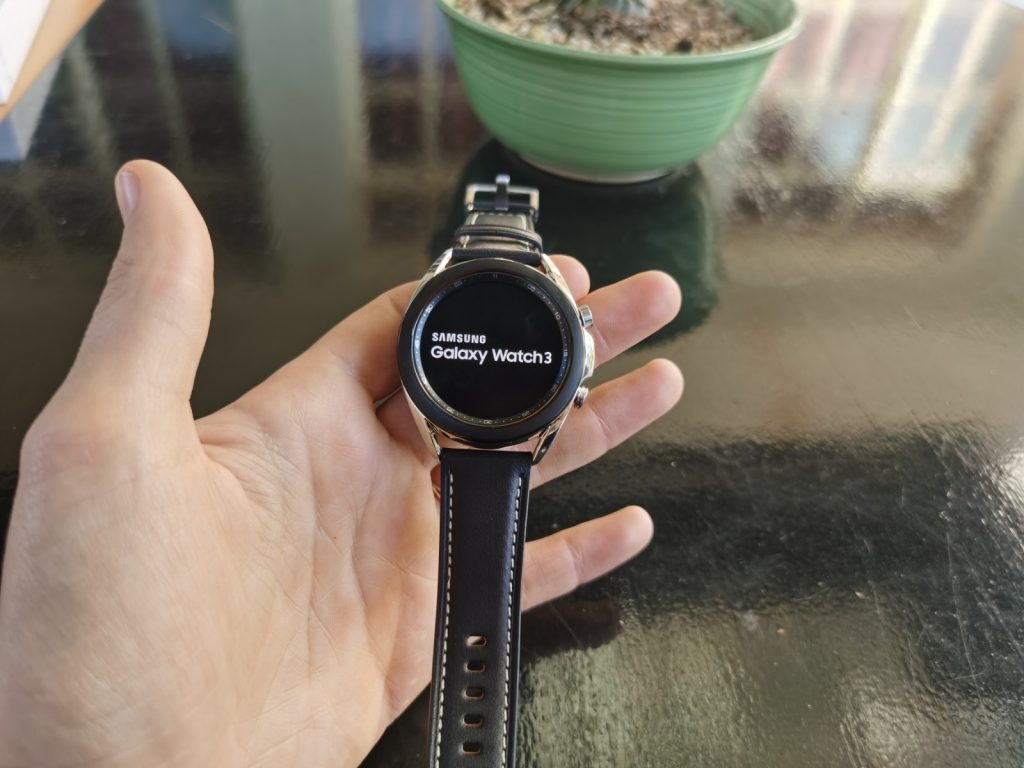We may still be in the infancy of smartgear. Even though analogue watches are well forgotten by this point, smartwatches still have a ways to go to achieve that level of convenience. But the Samsung Watch 3 gets close to being a well-rounded wearable in 2020.
We don’t have time for ugly, bulky or useless smartwatches. If you’re gonna invest a substantial amount of money in a watch, a great analogue is still better than a crappy smartwatch. So you have to make sure the smartwatch does what you need it to do, and can keep up with your chosen lifestyle.
Samsung opted for its own Tizen OS in lieu of Google’s Wear OS for the Watch 3, it’s an impressive piece of hardware overflowing with cool features. Question is: will you use all, or even some of those features and how does the battery life fit into your schedule? Let’s strap it on, and have a look at the time.
The look grows on you
Out of the box, we weren’t particularly impressed with the Watch 3’s design. It feels bulky and weighty. We reviewed the black/chrome variation in the smaller 41mm size, and although not our style (or size), the bulky body became easier on the eyes the longer we used it.
 The physically rotating bezel is a cool feature, and definitely useful in certain use cases, but it does make the very analogue-looking device very bulky. If you’re after something subtle, the Watch 3 shouldn’t be your go-to. Its leather straps and machined metal body look slick enough, and the two side buttons are very useful. The incredibly satisfying spin of that bezel is marvellous too. Especially when the built-in haptics provide an even greater sense of tactility.
The physically rotating bezel is a cool feature, and definitely useful in certain use cases, but it does make the very analogue-looking device very bulky. If you’re after something subtle, the Watch 3 shouldn’t be your go-to. Its leather straps and machined metal body look slick enough, and the two side buttons are very useful. The incredibly satisfying spin of that bezel is marvellous too. Especially when the built-in haptics provide an even greater sense of tactility.
On to the fleur de gras, that little display. The Galaxy Watch 3’s 360 x 360 Super AMOLED display is absolutely gorgeous. As expected from Samsung (who are, after all, display royalty), it’s pin-sharp. Even if you have terrible eyesight, you’ll make out the tiniest of text thanks to deep blacks and vivid colours. It’s also super responsive, as it should be.
The smaller of the two devices, the 41mm version packs a 1.2in screen, while that larger 45mm model pushes it up slightly to a 1.3in display. This may be a tiny reason to go for the larger of the two. Well, that and the fact that it looks that much more badass.
Well-rounded timekeeper
Interestingly, the Galaxy Watch 3 is running the same processor you’ll find in the original Galaxy Watch. Luckily we never ran into performance or computing issues. It’s just a watch, after all.
 It’s powered by 1GB of RAM (again, this is fine — it’s a watch), and you’ve got a whole 4GB of storage to play with. They actually come with 8GB standard, but the OS alone takes up half of that tiny capacity. Other than that, the menus run silky smooth, apps boot up and run well and navigating through the watch is an absolute joy, thanks to that glorious rotating bezel.
It’s powered by 1GB of RAM (again, this is fine — it’s a watch), and you’ve got a whole 4GB of storage to play with. They actually come with 8GB standard, but the OS alone takes up half of that tiny capacity. Other than that, the menus run silky smooth, apps boot up and run well and navigating through the watch is an absolute joy, thanks to that glorious rotating bezel.
You also have access to Samsung Pay here, which is a nice touch. It’s one of the few digital payment methods available in SA, and it’s just so convenient tapping a watch and not a phone at the local Pick n Pay.
At least it doesn’t look like a fitness watch
Just because it doesn’t look the part, doesn’t mean it’s not a fitness powerhouse. To paraphrase an archaic lipstick ad: “You can go from business in the day to party in the night without taking it off.” Same goes here.
 The Galaxy Watch 3’s fitness tracking features are robust — they provide you with all of the activity and sports tracking bits required for almost everyone. Calories burned, steps walked, heart rate and blood oxygen level tracking are all present and accounted for, we even received an update that gives us access to the highly-anticipated ECG and blood pressure monitoring feature.
The Galaxy Watch 3’s fitness tracking features are robust — they provide you with all of the activity and sports tracking bits required for almost everyone. Calories burned, steps walked, heart rate and blood oxygen level tracking are all present and accounted for, we even received an update that gives us access to the highly-anticipated ECG and blood pressure monitoring feature.
Sleep tracking also works well, offering insights into the length and type of shuteye you’ve managed to achieve, made more useful by how comfortable the Watch 3 is to wear, even in bed. One of our favourite features of the Galaxy Watch 3 though, is its ability to automatically start and pause workouts. If you’re as forgetful as we are, you’ll know all too well the frustrations of going for a run or cycle, before realising at the end that you forgot to start tracking.
And it’s decent at picking up automatic workouts. You may get the odd situation where you’re driving slowly through potholes on SA roads with a car and your watch registers it as an offroad biking session. Obviously your heart rate spikes, because no-one likes driving through potholes in the CBD, but yeah — we deserved that ‘offroad biking’ session.
The one ‘Hmmm’ moment
It’s never all flowers and doughnut sprinkles when it comes to wearables. Where’s the catch? Well, If you’re used to the seven+ day battery life found on some fitness trackers from the likes of Garmin and Fitbit and even Huawei (which clocks out at two weeks), then the Galaxy Watch 3’s battery life will be disappointing.
It always seems to be the annoying fate of a smartwatch. Great features and bad battery life? Or good battery life and dwindling features? Well, in this case, it’s the former.
This is especially annoying if you’re keeping an eye on your sleep tracking. Sleep tracking works best if you’re actually wearing your watch while sleeping, and the two-to-three days (if you’re lucky) battery on the Watch 3 means more charging nights than you’d care to admit. Samsung has opted to bring down the battery size to 340mAh, compared to the original Galaxy Watch’s 472mAh offering.
Samsung Galaxy Watch 3 Verdict
The Samsung Galaxy Watch 3 doesn’t lack much, and there’s a helluva lot to love about it. It’s a robust piece of tech that’ll probably last longer than you’d expect, with a sturdy build, great design and decent specs. The spinning bezel is nice, but not extremely necessary as we found in our testing.
Mix all of that with more tracking and lifestyle features than you’d ever care to admit you use, and the Watch 3 is a powerhouse watch. Is it worth the R9,000 to R10,000 price tag? That’s completely up to you to decide.




